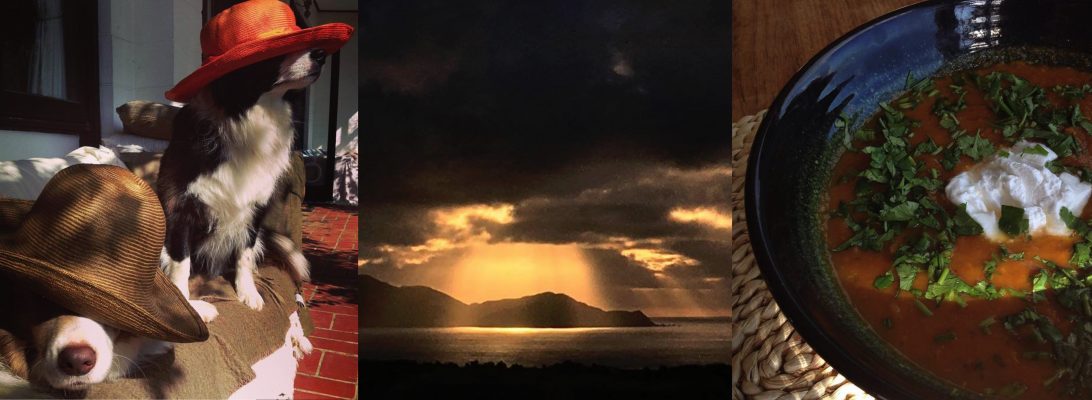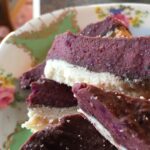
Once upon a time there was a Sugar Monster that lived inside of a human called Tink. They co-existed quite happily, with Tink feeding her monster mostly with organic dark chocolate and gluten free bread but occasionally on deliciousness such as jam doughnuts. And then one day, something happened and the sky darkened ominously in the world of the Sugar Monster…
And so it would seem that having three miscarriages in six months was a little more than my body could tolerate and I’ve spent the last several months recovering from an uncomfortable but enlightening flare up of an autoimmune condition.
In all honesty, I wasn’t aware that I was that unwell to begin with. My energy levels were very low but I’d got use to that in the course of experiencing three early pregnancies and miscarrying. I’ve never been a good sleeper, so waking during the night and feeling groggy in the morning was nothing new. An awareness that my health has been much less than optimal really began with a commitment to heal parts of my story and with a new diet.
Anxiety is part of my story. It runs in the family – I can see its jagged grey edge weaving fearfully through generations. But it’s one of those things that’s so normal in the family, most of the time we just don’t see it. Always anticipating the worst and living in a a very subtle world of WhatIfs, is just part of our family culture.
To be honest, I thought I’d avoided drawing the anxiety short straw. I’d grown up with a mother who self medicated anxiety with wine and tranquilisers and I certainly wasn’t THAT anxious, in fact I’ve often had people remark on how serene and grounded I am in times of crisis. But in advance of possibly trying again to have a baby, I became very clear that anxiety is a family tendency and I was prepared to do whatever I could to not carry that through to another generation. And so in August I set a very clear intention to take forty two days – a day for every year of my life – to heal.
I have a deep interest in good, in all senses of the word, food. I’ve worked for Urban Harvest, an excellent little online farmers’ market, I’m immersing myself in permaculture and we’re growing as much food as we can here at Peka Peka. Lately I’ve been reading a little about epigenetics (basically how our “ancestors’ lousy childhoods or excellent adventures might change our personality, bequeathing anxiety or resilience by altering the epigenetic expressions of genes in the brain) and nutrition (nutrients can reverse or change epigenetic phenomena) which I find fascinating. And for the past year my partner Adam and I had been talking about doing the Autoimmune Paleo diet as a way of healing his psoriasis.
For those of you who haven’t encountered the Paleo diet, the basis of it is that for most of our evolution as a species we’ve made energy from fat, not sugar. With the advent of agriculture we began to get our energy from grains which convert into sugar and in general, sugar causes inflammation and consequently, very often, disease. At their core, autoimmune diseases are caused by systemic inflammation that leads your body to attack itself.
The Autoimmune Paleo diet (AIP) is an elimination diet. Initially you cut out all grains, dairy, sugar, nuts & seeds and eggs (and nightshades, as they can be a trigger for some people) until your symptoms disappear, then you gradually reintroduce particular foods and see how your body responds. Adam’s psoriasis all but disappeared in a week. A week. Having had doctors tell him for twelve years that there was very little, apart from steroid cream, he could do about the condition, changing his diet had it nearly gone in just a few days. He has learned that chilli seems to be the main trigger. He also suffers from some arthritis in his hands and feet, and he’s learned that red wine and mandarins trigger that.
My healing has not been quite so straight forward. About a week into the diet, I felt amazing. AMAZING. I went for the best run I’ve ever had. Then the Sugar Monster began to starve and scream and I unwittingly replaced my usual daily dose of sugar (a few squares of dark chocolate, a teaspoon of honey in tea, occasional baking) with delectable AIP treats made with dried fruit and coconut butter. But it turns out that all kinds of sugar – even the good ones, at the moment, even high fructose fruit – make for an unwell Tink. Indigestion, congestion, fogginess, agitation, inflammation galore. And anxiety.
For two weeks or so, almost every night, I’d wake in the early hours of the morning bordering on panic. I’d focus on a particular symptom – indigestion, congestion, headache and convince myself that I was going to die. I kid you not. Either of some terminal disease or, when the congestion was bad and I couldn’t breathe easily or my heart was beating loud and fast, I would tell myself I had to stay awake because if I went to sleep I would stop breathing.
It was exhausting, at times almost paralysing, but it passed. I began to sleep better, my digestion improved and I’ve been struck by how much clearer my thinking is and better my ability to focus is. I’ve grown increasingly aware of how much sugar (in any form) I can have. And as my wellbeing improves, day by day, I’m aware of how lacking in true wellness I was before I embarked on this journey. I may not have been dysfunctionally anxious, but it was there – it had been there all my life, fear hidden amongst a family culture of anxiety and coped in part because as a child of an addict I have very well developed coping mechanisms and a high level of resilience. It is only now, in the absence of anxiety, underlying stress and with increasing levels of energy that I’m beginning to experience what feels like to be well, not just free of disease.
 At the moment, I’m still on a strict diet, dense in nutrients. Loads of greens and bone broth. Which is not to say I’m not still sorely tempted to have a jam doughnut and a good flat white. Although a lot less than I was a few weeks ago after I woke from a very vivid dream about inhaling a block of Whittaker’s chocolate and then in real life cheated on my diet with a disappointing average flat white and half a cupcake. But boy oh boy did my body let me know it was unhappy. I had an agitated inflamed sleep (or lack thereof) and woke feeling an unpleasant mix of jetleg, hangover and head cold. So, for the meantime, it’s greens instead of doughnuts, I’ve sent my sugar monster packing and it would seem that it has taken anxiety with it.
At the moment, I’m still on a strict diet, dense in nutrients. Loads of greens and bone broth. Which is not to say I’m not still sorely tempted to have a jam doughnut and a good flat white. Although a lot less than I was a few weeks ago after I woke from a very vivid dream about inhaling a block of Whittaker’s chocolate and then in real life cheated on my diet with a disappointing average flat white and half a cupcake. But boy oh boy did my body let me know it was unhappy. I had an agitated inflamed sleep (or lack thereof) and woke feeling an unpleasant mix of jetleg, hangover and head cold. So, for the meantime, it’s greens instead of doughnuts, I’ve sent my sugar monster packing and it would seem that it has taken anxiety with it.
This is not, of course, the whole story. This healing has not just been about removing foods that cause inflammation and trigger symptoms but adding nutrient dense food, in order to give my body what it needs to heal. That in itself is a whole other blogpost, and I’ve gone on quite long enough except to say that community is the other element in this story of healing. I’ve been incredibly fortunate in that Adam has temporarily pivoted from developing his coaching work and gone back to the film industry for a few months, in large part to give me time and space to heal. Our housemate Lissa has been come along on this ride of broth & greens with us and has been a constant presence of support. And finally, I’ve had the privilege of working with, at different times, a team of practitioners who I’ve not only been supported by but have learned a great deal from. They say it takes a village to raise a child, I’m beginning to understand that it takes a community to heal.
As this story comes to an end, I imagine my Sugar Monster sitting on a hill looking defeated and feeling weak. Anxiety sits alongside, alert & aware, sniffing the air for any hint of a doughnut.









